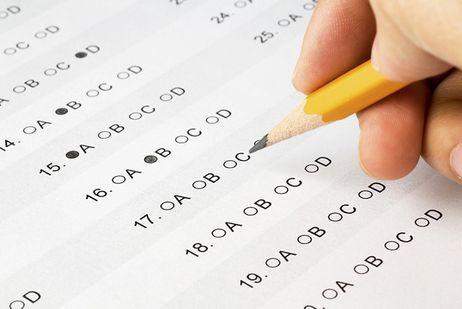Interested in learning how community colleges throughout the state of California are performing? Now, it is easier than ever before to check on the progress of these schools, through a new scorecard system, that provides measurable date regarding student performance and success. The new web-based scorecards, which were recommended by the Student Task Force, provide statistics on completion and persistence rates, as well as other significant data.
About the New System
According to Inside Higher Ed, the new scorecard system was created in the midst of a series of reforms to improve the California Community College System overall. The scorecards represent an effort by community colleges to become more transparent to the general public, so that students considering higher education will be able to make more informed choices about schools in the state. There is also a hope that the accountability associated with the scorecard system will motivate schools to raise the bar on student performance and completion rates.
Community colleges have traditionally provided a cost-effective means of pursuing higher education for students of all backgrounds and income levels. However, reports of dismal completion rates, coupled with the system’s inability to accommodate all students in recent years, has placed greater scrutiny on the value of these schools. The current administration’s focus on community college as a means of turning out more college graduates has also created a need for more accountability for these schools.
This video offers an overview of the community colleges in California.
The Purpose of the Scorecards
Brice W. Harris, chancellor of the California Community College System, told Inside Higher Ed the primary goal of the scorecards is to “help more students achieve their educational goals on time.” To that end, the scorecards provide data on retention, transfer and graduation rates. Results are broken down by gender, ethnicity and even gender, to provide students with specific information that may help them make the best choice in a community college for their needs.
The baseline for each of California’s 112 community colleges was established during the 2011-2012 school year. These figures will allow students to determine whether schools are making necessary improvements, holding steady or requiring significant changes to bring student performance and success up to par. However, officials caution that the numbers should not be used to compare one community college to another, since the different environments of each school will directly impact rates at those locations.
Benefits to Schools
The new scorecards are not merely designed to help students considering community college. The data can also be beneficial to individual schools, by providing them with a snapshot of their current performance and identifying areas where improvement is most needed. According to the Chronicle of Higher Education, colleges for the first time will be able to obtain measurable data to help them close achievement gaps within their system.
“The scorecard will help us see what is working in California, and what needs improvement,” Manuel Baca, president of the California Community College’s Board of Governors, was quoted as saying at the Chronicle. “This will lead to increased student success, and ultimately, it will help the nation reach its ambitious, yet certainly attainable, goal.”
This video offers another look at California community colleges.
Data could Lead to Performance-Based Funding
Another potential beneficiary of the data published on the annual scorecards could be policy makers and college leaders. State lawmakers have been pushing for a way to institute performance-based funding for community colleges, which would ensure the schools with the best track record for student success would receive the lion’s share of state funding. Now, analysis on both the state and college level will be performed based on measurable data, rather than anecdotal evidence.
“It has already created considerable conversations on our campuses and in our communities,” Linda Thor, chancellor for the Foothill-De Anza Community College District, told Inside Higher Ed.
How are Schools Doing?
With the scorecards now in place, the next logical question is how is each California community college currently performing? The Los Angeles Times reported on the recent data released on the scorecards, which show less than half of the community college students in the state are obtaining an associate degree or transferring to a four-year school. Those figures are at a five-year low, which Harris said could be attributed in part to the financial crisis that has faced most of the state’s schools in recent years.
“These have been five of the most stressful years California community colleges have suffered in decades,” Harris told the Los Angeles Times. “It doesn’t surprise me we’ve seen the numbers soften as a result. It’s a clarion call that in spite of the difficult financial times we’ve had, we have to redouble our efforts and focus on student success.”
Across the state, around 49 percent of students who enrolled in community college in 2006 finished their degree or transferred within six years. That number contrasts slightly with the percentage in 2002, which was just over 52 percent. The contrast is more striking between students who enter community college “college-ready,” and those who require remedial coursework. Only 41 percent of students taking remedial math or English courses ended up completing their education or transferring, while 71 percent of students considered college-ready did so.
The newly released student report cards can be found at the website for the Student Success Initiative. The website also provides information about the framework used to create the scorecards and the specifications of the data provided. The scorecards have already received plenty of attention, with Inside Higher Education reporting that the website received more than 17,000 clicks on the first day the data was released.
Questions? Contact us on Facebook. @communitycollegereview














